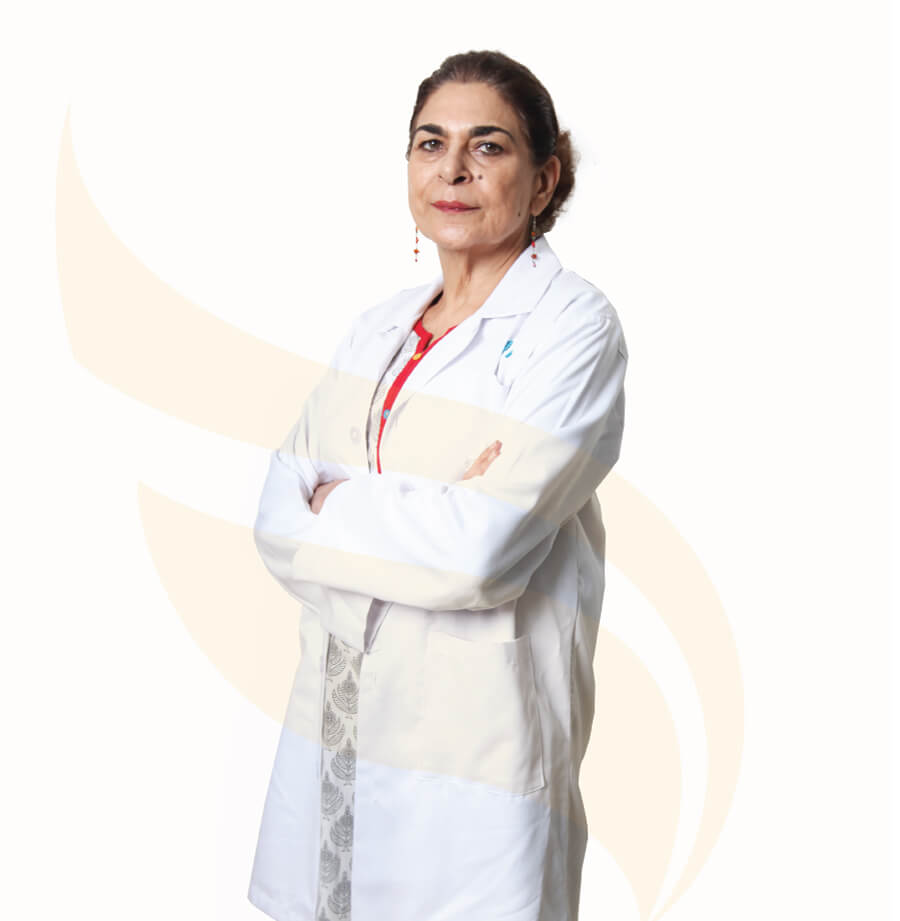Could not find what you are looking for?
- Treatments & Procedures
- Pediatric Laparoscopic Surgery- Types, Procedure, Cost In India, Risks, Recovery and Benefits
Pediatric Laparoscopic Surgery- Types, Procedure, Cost in India, Risks, Recovery and benefits
Best Hospital for Pediatric Laparoscopic Surgery in India
What is Pediatric Laparoscopic Surgery?
Pediatric laparoscopic surgery is a minimally invasive surgical technique specifically designed for children. This procedure utilizes small incisions and specialized instruments, including a camera, to perform surgeries within the abdominal cavity. Unlike traditional open surgery, which requires larger incisions, pediatric laparoscopic surgery allows for quicker recovery times, reduced pain, and minimal scarring.
The primary purpose of pediatric laparoscopic surgery is to treat various conditions affecting the gastrointestinal tract, reproductive organs, and other abdominal structures in children. Common conditions that may necessitate this procedure include appendicitis, hernias, gallbladder disease, and certain congenital anomalies. By employing this advanced surgical technique, pediatric surgeons can effectively address these issues while ensuring the safety and comfort of their young patients.
Why is Pediatric Laparoscopic Surgery Done?
Pediatric laparoscopic surgery is typically recommended when a child presents with specific symptoms or conditions that warrant surgical intervention. For instance, acute appendicitis is one of the most common reasons for this procedure. Symptoms may include severe abdominal pain, fever, and vomiting, which indicate inflammation of the appendix. In such cases, laparoscopic appendectomy is often the preferred method due to its effectiveness and reduced recovery time.
Another condition that may lead to pediatric laparoscopic surgery is an inguinal hernia. This occurs when a portion of the intestine protrudes through a weak spot in the abdominal muscles, leading to a visible bulge and potential discomfort. If the hernia becomes incarcerated or strangulated, surgical repair is necessary to prevent complications. Laparoscopic techniques allow for a less invasive approach to hernia repair, minimizing trauma to surrounding tissues.
Additionally, pediatric laparoscopic surgery may be indicated for children with gallbladder disease, such as cholecystitis or gallstones. Symptoms can include abdominal pain, nausea, and jaundice. In these cases, laparoscopic cholecystectomy is often performed to remove the gallbladder, alleviating symptoms and preventing further complications.
In summary, pediatric laparoscopic surgery is performed when a child exhibits symptoms of specific abdominal conditions that require surgical intervention. The decision to proceed with this procedure is based on a thorough evaluation of the child's health, the severity of the condition, and the potential benefits of a minimally invasive approach.
Indications for Pediatric Laparoscopic Surgery
Several clinical situations and diagnostic findings may indicate that a child is a suitable candidate for pediatric laparoscopic surgery. These indications are typically based on the child's symptoms, imaging studies, and overall health status.
- Acute Appendicitis: As mentioned earlier, acute appendicitis is a leading indication for pediatric laparoscopic surgery. If imaging studies, such as an ultrasound or CT scan, confirm the diagnosis, a laparoscopic appendectomy is often recommended to remove the inflamed appendix.
- Inguinal Hernia: Children with inguinal hernias may present with a bulge in the groin area, especially when crying or straining. If the hernia is diagnosed through a physical examination and imaging, surgical repair via laparoscopy is typically indicated, particularly if the hernia is incarcerated or symptomatic.
- Cholecystitis and Gallstones: Children experiencing recurrent abdominal pain, nausea, or jaundice may undergo imaging studies that reveal gallbladder disease. If gallstones or inflammation of the gallbladder is confirmed, laparoscopic cholecystectomy is often the preferred surgical option.
- Congenital Anomalies: Certain congenital conditions, such as malrotation of the intestines or some other complex anomalies, may require surgical correction. Laparoscopic techniques can be employed to address these anomalies, providing a less invasive approach to complex surgical issues.
- Ovarian Cysts or Tumors: In female pediatric patients, the presence of ovarian cysts or tumors may necessitate surgical intervention. Laparoscopic surgery allows for the evaluation and treatment of these conditions while minimizing recovery time and potential complications.
- Diagnostic Purposes: In some cases, pediatric laparoscopic surgery may be performed for diagnostic purposes. If a child presents with unexplained abdominal pain or other gastrointestinal symptoms, laparoscopy can provide direct visualization of the abdominal organs, aiding in diagnosis and treatment planning.
In conclusion, the indications for pediatric laparoscopic surgery are diverse and depend on the specific conditions affecting the child. A thorough evaluation by a pediatric surgeon is essential to determine the appropriateness of this minimally invasive approach, ensuring the best possible outcomes for young patients.
Contraindications for Pediatric Laparoscopic Surgery
Pediatric laparoscopic surgery is a minimally invasive technique that offers numerous benefits, but it is not suitable for every child. Certain conditions and factors may make a patient unsuitable for this type of surgery. Understanding these contraindications is crucial for parents and caregivers to make informed decisions regarding their child's health.
- Severe Obesity: Children with significant obesity may not be ideal candidates for laparoscopic surgery. Excess body fat can complicate the procedure, making it difficult for surgeons to visualize the surgical field and perform the operation safely.
- Previous Abdominal Surgeries: If a child has had multiple abdominal surgeries, scar tissue (adhesions) may have formed. These adhesions can complicate laparoscopic access and increase the risk of injury to surrounding organs.
- Certain Medical Conditions: Children with specific medical conditions, such as severe respiratory or cardiac issues, may not tolerate the anesthesia required for laparoscopic surgery. Conditions like cystic fibrosis or congenital heart defects can pose significant risks during the procedure.
- Infection or Inflammation: If there is an active infection in the abdominal area or significant inflammation, laparoscopic surgery may be postponed. Performing surgery in the presence of infection can lead to complications and poor healing.
- Anatomical Abnormalities: Some children may have anatomical abnormalities that make laparoscopic access difficult or impossible. For instance, certain congenital malformations of the gastrointestinal tract may require open surgery instead.
- Coagulation Disorders: Children with bleeding disorders or those on anticoagulant therapy may face increased risks during surgery. The potential for excessive bleeding can make laparoscopic techniques less safe.
- Age and Size Considerations: Very young children or infants may not be suitable candidates for laparoscopic surgery due to their small size and the challenges associated with operating in a limited space. Surgeons will assess the child's age and weight to determine the best approach.
- Parental Concerns: Sometimes, parental anxiety or concerns about the procedure can influence the decision. If parents are not comfortable with the idea of laparoscopic surgery, it may be worth discussing alternative options with the healthcare team.
How to Prepare for Pediatric Laparoscopic Surgery
Preparing for pediatric laparoscopic surgery involves several important steps to ensure the child is ready for the procedure. Parents and caregivers play a vital role in this preparation process.
- Pre-Operative Consultation: Schedule a consultation with the pediatric surgeon. During this visit, the surgeon will explain the procedure, discuss potential risks, and answer any questions. This is also an opportunity to review the child's medical history and any medications they are taking.
- Fasting Instructions: Children are typically required to fast for a certain period before surgery. This means no food or drink for several hours prior to the procedure. The surgeon will provide specific instructions based on the child's age and the time of the surgery.
- Pre-Operative Tests: Depending on the child's health and the type of surgery, the surgeon may order pre-operative tests. These can include blood tests, imaging studies, or an electrocardiogram (EKG) to assess the child's overall health and readiness for anesthesia.
- Medication Review: Parents should provide a complete list of the child's medications, including over-the-counter drugs and supplements. The surgeon may advise stopping certain medications, especially those that can affect blood clotting, such as aspirin or ibuprofen.
- Discuss Anesthesia: The anesthesiologist will meet with the family before the surgery to discuss the anesthesia plan. Parents should ask questions about the type of anesthesia that will be used and any potential side effects.
- Emotional Preparation: Preparing the child emotionally is just as important as physical preparation. Explain the procedure in simple terms, focusing on the benefits and what to expect. Encourage the child to express any fears or concerns.
- Post-Operative Care Plan: Discuss the post-operative care plan with the healthcare team. Understand what to expect after the surgery, including pain management, activity restrictions, and follow-up appointments.
- Transportation Arrangements: Since the child will be under anesthesia, arrange for someone to drive them home after the procedure. It is not safe for the child to travel alone or in a taxi.
Pediatric Laparoscopic Surgery: Step-by-Step Procedure
Understanding the step-by-step process of pediatric laparoscopic surgery can help alleviate anxiety for both parents and children. Here’s what typically happens before, during, and after the procedure.
Before the Procedure
- Arrival at the Hospital: On the day of surgery, arrive at the hospital or surgical center as instructed. Check in at the front desk and complete any necessary paperwork.
- Pre-Operative Preparation: The child will be taken to a pre-operative area where nurses will check vital signs and start an intravenous (IV) line for medication and fluids. The child may be given a sedative to help them relax.
- Meeting the Surgical Team: The surgeon and anesthesiologist will visit to confirm the procedure and answer any last-minute questions. Parents can stay with the child until they are taken to the operating room.
During the Procedure
- Anesthesia Administration: Once in the operating room, the anesthesiologist will administer anesthesia, ensuring the child is comfortable and pain-free throughout the surgery.
- Surgical Access: The surgeon will make small incisions in the abdomen, typically three to four, to insert the laparoscope and surgical instruments. The laparoscope is a thin tube with a camera that allows the surgeon to see inside the abdomen on a monitor.
- Performing the Surgery: The surgeon will perform the necessary procedure, such as removing an appendix or repairing a hernia, using the instruments guided by the laparoscope. The minimally invasive nature of this technique usually results in less pain and quicker recovery.
- Closing the Incisions: After the procedure is complete, the surgeon will remove the instruments and close the incisions with sutures or adhesive strips. The entire surgery typically lasts between one to three hours, depending on the complexity.
After the Procedure
- Recovery Room: The child will be taken to a recovery room where they will be monitored as they wake up from anesthesia. Nurses will check vital signs and manage any pain.
- Post-Operative Care: Once the child is stable and alert, they may be allowed to drink clear fluids. The healthcare team will provide instructions on pain management and activity restrictions.
- Discharge Instructions: If the child is recovering well, they may be discharged the same day. Parents will receive detailed instructions on caring for the incisions, signs of complications to watch for, and follow-up appointments.
Risks and Complications of Pediatric Laparoscopic Surgery
While pediatric laparoscopic surgery is generally safe, like any surgical procedure, it carries some risks. Understanding these risks can help parents make informed decisions and prepare for potential complications.
Common Risks
- Infection: There is a small risk of infection at the incision sites. Keeping the area clean and following post-operative care instructions can help minimize this risk.
- Bleeding: Some bleeding is normal, but excessive bleeding may require additional treatment. Surgeons monitor for this during and after the procedure.
- Pain and Discomfort: Post-operative pain is common but usually manageable with medication. Children may experience soreness around the incision sites.
Less Common Risks
- Organ Injury: Although rare, there is a risk of injury to surrounding organs during the procedure. Surgeons take great care to avoid this, but it can occur, especially in cases of previous surgeries or anatomical abnormalities.
- Anesthesia Complications: Reactions to anesthesia can occur, though they are rare. Anesthesiologists are trained to handle any complications that may arise.
- Conversion to Open Surgery: In some cases, the surgeon may need to convert the laparoscopic procedure to an open surgery if complications arise or if the surgical field is not adequately visualized.
Rare Risks
- Thrombosis: There is a very small risk of blood clots forming in the legs, especially in older children or those with certain risk factors. Early mobilization and hydration can help reduce this risk.
- Long-term Complications: While rare, some children may experience long-term complications, such as bowel obstruction due to adhesions formed after surgery.
In conclusion, pediatric laparoscopic surgery is a valuable option for many surgical conditions in children. By understanding the contraindications, preparation steps, the procedure itself, and potential risks, parents can feel more confident in navigating this important aspect of their child's healthcare journey. Always consult with a qualified pediatric surgeon to discuss the best options for your child's specific needs.
Recovery After Pediatric Laparoscopic Surgery
Recovery from pediatric laparoscopic surgery is generally swift, thanks to the minimally invasive nature of the procedure. Most children can expect to go home the same day or the following day after surgery, depending on their individual health and the complexity of the procedure.
Expected Recovery Timeline
- Immediate Post-Operative Period (0-24 hours): After surgery, your child will be monitored in a recovery area. They may feel groggy from anesthesia and will be given pain relief as needed. It's common for children to experience some discomfort, which can usually be managed with prescribed medications.
- First Week: During the first week, your child may experience mild pain at the incision sites and some bloating or gas discomfort. It's essential to encourage them to walk around gently to help alleviate gas pain. Most children can return to light activities within a few days, but strenuous activities should be avoided.
- Two Weeks Post-Surgery: By the end of the second week, many children feel significantly better and can resume most normal activities, including school. However, they should still avoid heavy lifting and vigorous sports.
- Full Recovery (4-6 weeks): Complete recovery can take up to six weeks, depending on the individual child and the specific procedure performed. Follow-up appointments with the surgeon will help ensure that healing is progressing as expected.
Aftercare Tips
- Pain Management: Administer pain relief as prescribed. Monitor your child for any signs of increased pain or discomfort.
- Diet: Start with clear liquids and gradually introduce soft foods. Avoid heavy, greasy, or spicy foods initially.
- Hydration: Encourage your child to drink plenty of fluids to stay hydrated.
- Activity Restrictions: Limit physical activity, especially activities that involve running, jumping, or heavy lifting, for at least two weeks.
- Incision Care: Keep the surgical sites clean and dry. Watch for signs of infection, such as increased redness, swelling, or discharge.
When Normal Activities Can Resume
Most children can return to school and light activities within a week, while more vigorous activities and sports can typically be resumed after four to six weeks. Always consult with your child's surgeon for personalized advice based on their recovery progress.
Benefits of Pediatric Laparoscopic Surgery
Pediatric laparoscopic surgery offers numerous benefits compared to traditional open surgery. Here are some key health improvements and quality-of-life outcomes:
- Minimally Invasive: The small incisions used in laparoscopic surgery result in less tissue damage, leading to reduced pain and quicker recovery times.
- Reduced Scarring: Smaller incisions mean less visible scarring, which is particularly important for children and their parents.
- Shorter Hospital Stays: Many laparoscopic procedures can be performed on an outpatient basis, allowing children to return home the same day.
- Faster Return to Normal Activities: Children typically recover more quickly and can return to their daily routines sooner than with traditional surgery.
- Lower Risk of Complications: The minimally invasive approach often results in fewer complications, such as infections or hernias at the incision site.
- Improved Pain Management: Patients often report less postoperative pain, which can lead to a more comfortable recovery experience.
- Enhanced Visualization: Surgeons have a better view of the surgical area through the laparoscope, allowing for more precise operations.
Pediatric Laparoscopic Surgery vs. Traditional Open Surgery
When surgical intervention is required for a child, the choice between a minimally invasive laparoscopic approach and traditional open surgery is a significant one. While laparoscopic surgery offers many benefits, open surgery remains a vital technique in certain situations. The best approach depends on the child's specific condition, its complexity, the surgeon's expertise, and other individual factors. Understanding the differences between these two primary surgical methods is key for parents.
| Feature | Pediatric Laparoscopic Surgery | Traditional Open Surgery |
|---|---|---|
| Incision Size | Small (typically 0.5-1 cm, multiple incisions) | Larger (typically 5-10 cm, single incision) |
| Recovery Time | Faster (days to weeks) | Slower (weeks to months) |
| Hospital Stay | Shorter (same day or overnight for most cases) | Longer (several days) |
| Pain Level | Lower postoperative pain | Higher postoperative pain |
| Scarring | Minimal (small, less noticeable scars) | More noticeable (larger scars) |
| Risk of Infection | Lower risk of wound infection | Higher risk of wound infection |
| Return to Activities | Quicker return to normal activities | Slower return to normal activities |
| Visibility for Surgeon | Enhanced (magnified view on monitor) | Direct (physical view of surgical field) |
| Cost | Moderate (e.g., ₹1,00,000 to ₹3,00,000 in India) | Varies, often comparable to or slightly higher than laparoscopic depending on complexity and hospital stay |
| Suitability for Complex Cases | May be challenging or contraindicated in very complex cases, severe adhesions, or very young/small infants | Often preferred or necessary for very complex cases, significant adhesions, or certain anatomical abnormalities |
| Conversion Risk | Potential for conversion to open surgery if complications arise or visualization is difficult | Not applicable (already open) |
Cost of Pediatric Laparoscopic Surgery in India
The average cost of pediatric laparoscopic surgery in India ranges from ₹1,00,000 to ₹3,00,000. Price can vary based on several key factors:
- Hospital: Different hospitals have varying pricing structures. Renowned institutions like Apollo Hospitals may offer comprehensive care and advanced facilities, which can influence the overall cost.
- Location: The city and region where the Pediatric Laparoscopic Surgery is performed can affect costs due to differences in living expenses and healthcare pricing.
- Room Type: The choice of accommodation (general ward, semi-private, private, etc.) can significantly impact the total cost.
- Complications: Any complications during or after the procedure can lead to additional expenses.
At Apollo Hospitals, we prioritize transparent communication and personalized care plans. Apollo Hospitals is the best hospital for Pediatric Laparoscopic Surgery in India because of our trusted expertise, advanced infrastructure, and consistent focus on patient outcomes.
We encourage prospective patients seeking a Pediatric Laparoscopic Surgery in India to contact us directly for detailed information about the procedure cost and assistance with financial planning.
With Apollo Hospitals, you get access to:
- Trusted medical expertise
- Comprehensive aftercare services
- Excellent value and quality care
This makes Apollo Hospitals a preferred choice for Pediatric Laparoscopic Surgery in India.
FAQs About Pediatric Laparoscopic Surgery
What should my child eat before surgery?
Before surgery, your child may need to follow a clear liquid diet for a specified period. This typically includes water, clear broth, and gelatin. Avoid solid foods and dairy products as instructed by the surgeon.
How long will my child be in the hospital?
Most children undergoing pediatric laparoscopic surgery can go home the same day or the next day. The length of stay depends on the specific procedure and your child's recovery.
What pain relief options are available post-surgery?
Your child's doctor will prescribe pain relief medications to manage discomfort after surgery. Over-the-counter medications may also be recommended, but always consult with the surgeon before administering any medication.
When can my child return to school?
Children can typically return to school within a week after surgery, depending on their recovery progress. Ensure they are feeling well enough and consult with the surgeon for personalized advice.
Are there any dietary restrictions after surgery?
After surgery, start with clear liquids and gradually introduce soft foods. Avoid heavy, greasy, or spicy foods for the first few days. Follow your surgeon's dietary recommendations for the best recovery.
What signs of infection should I watch for?
Monitor the incision sites for increased redness, swelling, warmth, or discharge. If your child develops a fever or experiences worsening pain, contact the surgeon immediately.
Can my child participate in sports after surgery?
Strenuous activities and sports should be avoided for at least four to six weeks post-surgery. Consult with your child's surgeon before allowing them to resume physical activities.
How can I help my child manage post-operative pain?
Administer prescribed pain medications as directed and encourage your child to rest. Gentle activities, like short walks, can help alleviate discomfort and promote healing.
What if my child is feeling anxious about the surgery?
It's normal for children to feel anxious. Talk to them about the procedure, answer their questions, and reassure them that they will be well taken care of. Consider involving a child life specialist if available.
Is there a risk of complications with laparoscopic surgery?
While laparoscopic surgery is generally safe, as with any procedure, there are risks. Discuss potential complications with your child's surgeon to understand the specific risks associated with the planned surgery.
How long will the incisions take to heal?
Incisions from laparoscopic surgery typically heal within a few weeks. Keep the area clean and dry, and follow your surgeon's instructions for care.
What activities should be avoided during recovery?
Avoid heavy lifting, running, jumping, and any activities that could strain the abdominal area for at least two weeks post-surgery.
Can my child take a bath after surgery?
It's best to avoid baths until the incisions have healed completely. Showers are usually acceptable, but keep the incision sites dry.
What if my child has a pre-existing condition?
Inform the surgeon about any pre-existing conditions your child has. They will take this into account when planning the surgery and post-operative care.
Will my child need follow-up appointments?
Yes, follow-up appointments are essential to monitor your child's recovery and ensure that healing is progressing as expected. Your surgeon will provide a schedule for these visits.
How can I support my child emotionally during recovery?
Provide comfort and reassurance, engage in gentle activities together, and encourage open communication about their feelings. Being present and supportive can help ease their anxiety.
What should I do if my child is not eating after surgery?
It's common for children to have a reduced appetite post-surgery. Encourage small, frequent meals and focus on soft, easy-to-digest foods. If they continue to refuse food, consult the surgeon.
Can my child travel after surgery?
Travel should be avoided for at least a week after surgery. If travel is necessary, consult with your child's surgeon for specific recommendations.
What if my child has allergies?
Inform the surgical team about any allergies your child has, including medication allergies. This information is crucial for safe anesthesia and post-operative care.
How can I prepare my child for the hospital visit?
Prepare your child by explaining what to expect in simple terms. Consider a hospital tour if available, and bring along a favorite toy or blanket for comfort.
Conclusion
Pediatric laparoscopic surgery is a valuable option for many surgical needs in children, offering numerous benefits such as reduced pain, quicker recovery, and minimal scarring. If you are considering this procedure for your child, it is essential to discuss all aspects with a qualified medical professional. They can provide personalized advice and ensure that you and your child are well-informed and prepared for the journey ahead.












